AP Art History: Global Prehistory
Apollo 11 Stones
- Location: Namibia (Southern Africa)
- Date: ca. 25,500-25,300 BCE
- Material: Charcoal and ochre on stone
- Art mobilier: small examples of Prehistoric art that could be carried from place to place
- Total of 7 fragments, all featuring animal drawings
- Animal’s head is to big for body and skinny legs
- Discovered by German archaeologists in 1969, in a small rock shelter.
- Cave was inhabited for more than 100,000 years
- Unclear what is depicted in the stones
- Oldest known examples of figurative art in Africa
- Emphasis on animals is common in Prehistoric art
- Charcoal and stone were also common in Prehistoric art
- Named after the Apollo 11 spaceship
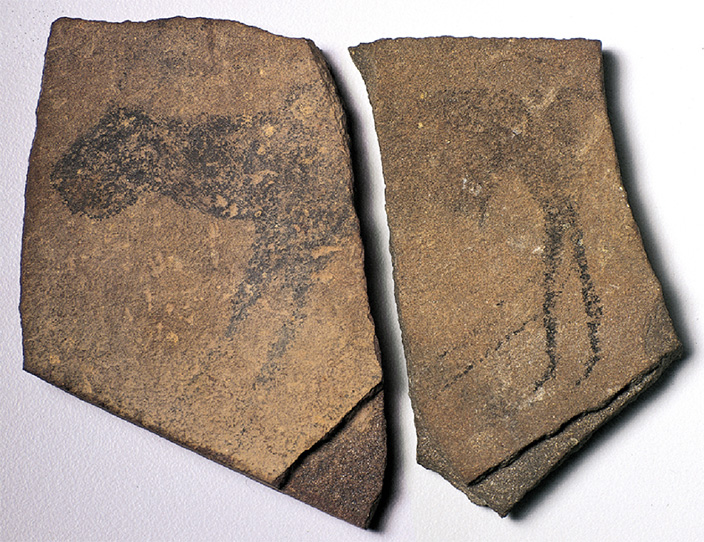
Camelid Sacrum in the Shape of a Canine
Location: Tequixquiac, Mexico (central mex)
Date: ca. 14,000 - 7,000
Material: Bone
Art Mobilier
Sacrum: The sacral spine (sacrum) is located below the lumbar spine and above the tailbone
Nostrils and mouth added by the carver to make the object appear like the head of a canine
Discovered accidentally by a worker on a drainage project: 40 feet below the ground in Mexico City, 1870
Not excavated using archeological methods, difficult to figure out date or content
Study and depiction of animals was common in prehistoric art
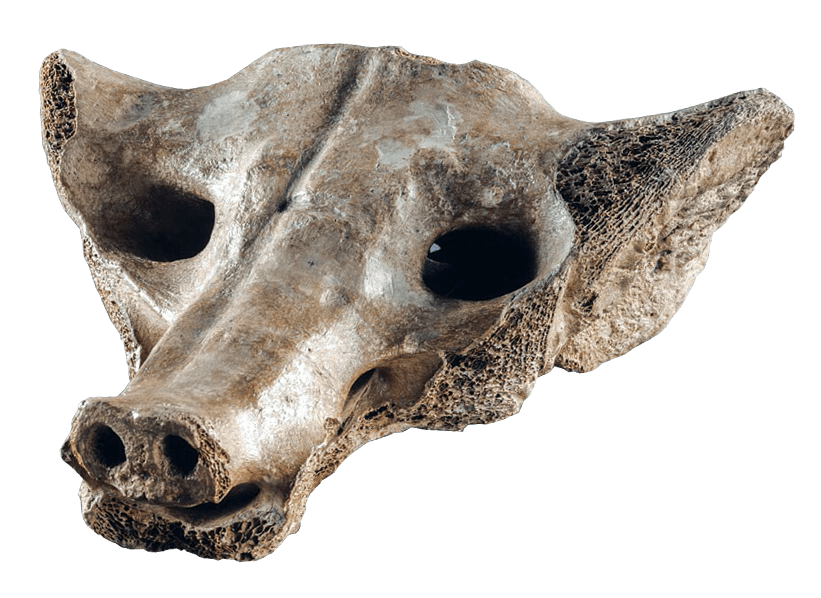
Running Horned Woman
Location: Tassili n’Ajjer, Nigeria
Date: 6000 - 4000 BCE
Materials: Pigment on rock
Painted with feathers. weeds, and fingers
Large female figure with horns caught running.
White dots on woman could represent scarification (modifying one’s body to create designs)
Armlets and garters used for decoration
Function: emphasized the importance of survival; possibly created as part of religious worship
Found in secluded and difficult to find area, suggests place of worship
Thousands of other cave paintings found in the same area and around the same time period
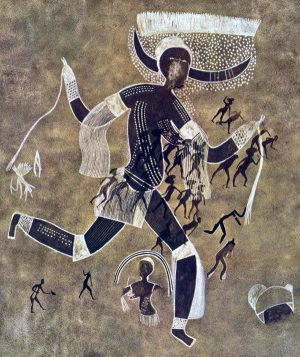
Great Hall of Bulls
Location: Lascaux, France - Paleolithic Europe
Date: ca. 15,000 - 13,000 BCE
Materials: Charcoal and ochre on rock
Rock Painting
Depicts bulls, deer, elk, horses, bison, lion, rhino, and bear
Overlapping animals
Twisted Perspective
Painted in a very remote area of the cave with very little visibility
Animals could be part of the culture’s religion
Animals are a source of food → painting represents a symbolic hunt, capturing the animals
Hundreds of stone tools found in the cave
Overlapping and repeated animals = more successful hunts
More than 350 cave sites in the region between Spain and France
Cold climate and scarce resources could be why animals are such a popular subject in prehistoric art
Some paintings are up to 5 meters long
HUGE

The Ambum Stone
Location: Papua New Guinea
Date: ca. 1500 BCE
Material: Greywacke Stone
About 8 inches tall
Possibly a sculpture of an echidna
Animal possibly seen as sacred
Function unknown: possibly religious, maybe a (motor) and pestle
Neolithic, settled in communities more time for sculpting
Currently in National Gallery of Australia
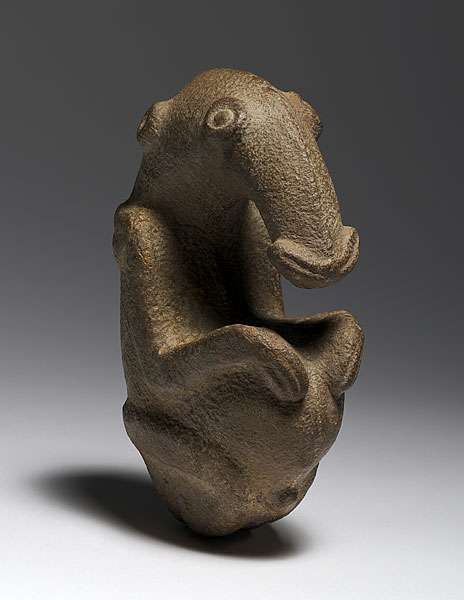
Anthropomorphic Stele
Location: Arabian Peninsula
Date: 4th millennium BCE
Material: Sandstone
Relief Sculpture
About three feet high
Details raised from the surface of the stone
Tall, verticle, upright
Minimalist
Facial features, clothing, and accessories
Function: MAYBE a grave marker - no written record to confirm
Content: Human figure, male
Found on a trade route in the Arabian Desert
Settled communities that farmed, more time for art and trade
Anthropomorphic = having human characteristics

/
Stonehenge
Location: Salisbury, England
Date: c. 2550 - 1600 BCE
Bluestone - durable stone
Large rectangular stones arranged in a circle
Possibly funerary
Arranged in two circles - one inside the other
Originally made of 30 trilithons
Trilithon: a structure consisting of two large vertical stones supporting a third stone set horizontally across the top
Could be a calendar (religious)
Could have been moved with a contraption of rope and logs on a flat surface
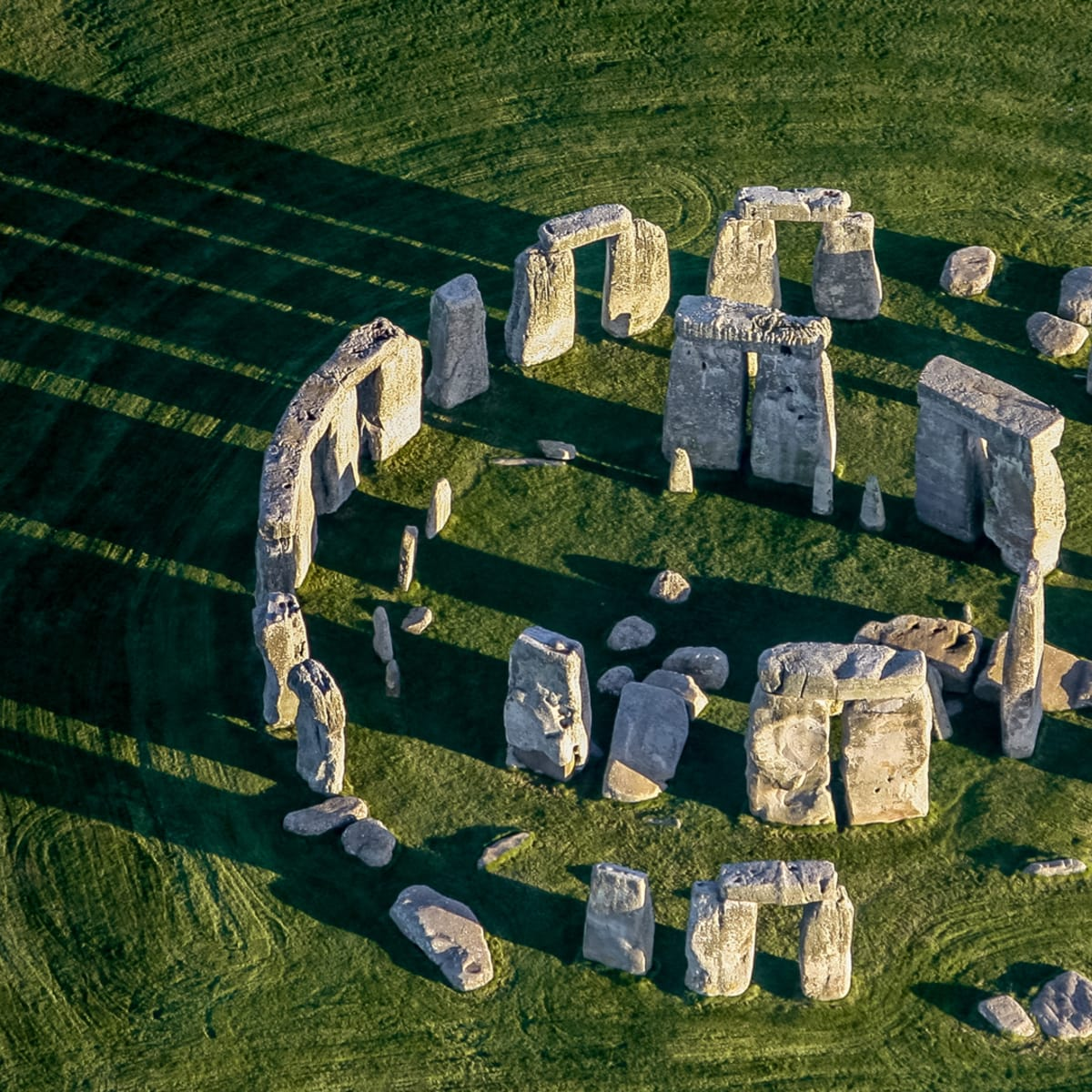
Jade Cong
Location: Liangzhu, China
Date: 3300 - 2200 BCE
Material: Carved Jade
Square hallow tube
Lines and circles form faces
Engravings are very precise/uniform
Engravings are sanded
Could represent dead ancestors/deities
Jade is hard to manipulate so lots of time is needed to create things
- Shows how important the culture believed congs were
Function: Shows power/wealth - could protect someone in the afterlife as they were found in graves
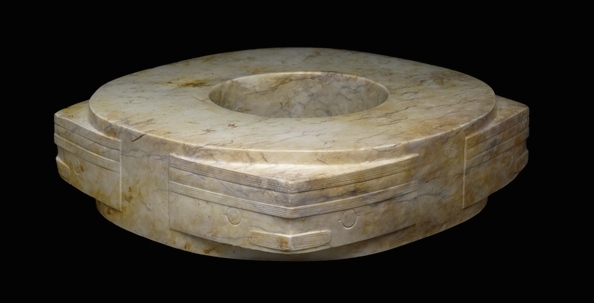
Beaker with Ibex Motifs
Location: Susa, Iran
Date: ca. 4200 - 3500 BCE
Materials: painted terra cotta
Cup made of baked clay with animal figures and geometric patterns
Neutral colors
Many different geographical shaped and animals, such as goat and dog-type animals
Function: Used for burial, buried w/ the deceased
Bushel with Ibex motifs from Susa Iran in the Susa I period was common
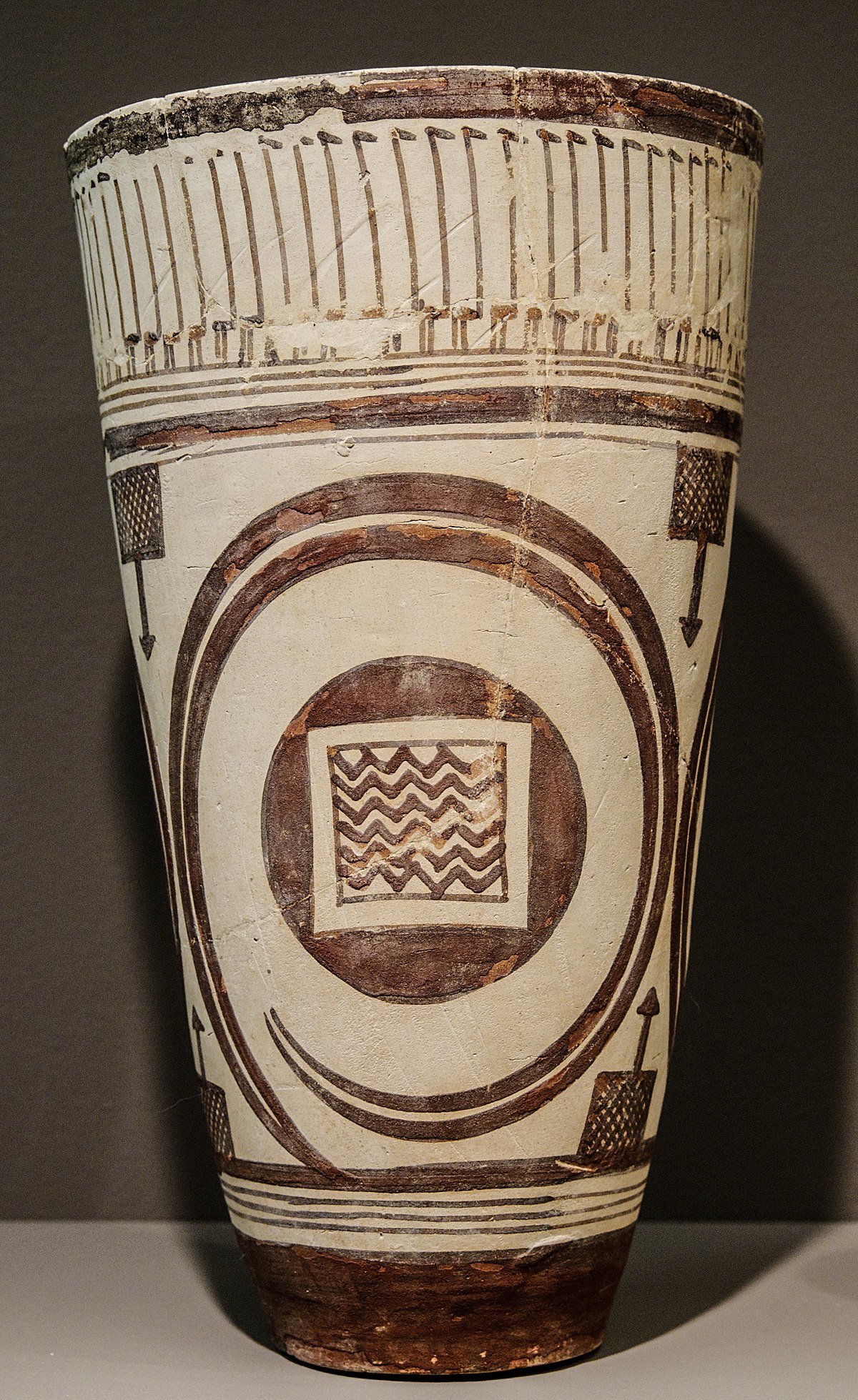
Terra Cotta Fragment
Location: Lapita, Soloman Island, Reef Islands
Date: 1000 BCE
Material: Incised Terra Cotta
Molded terra cotta
Stones, clam shells, fingernails, bird bones all used for designs
Clear anthropomorphic figures, faces, geometric designs
Pottery was a large part of the Lapita culture
- widespread
- Cultural significance
Discovered in New Caledonia Islands
- 85,000 indigenous peoples lived on the islands
